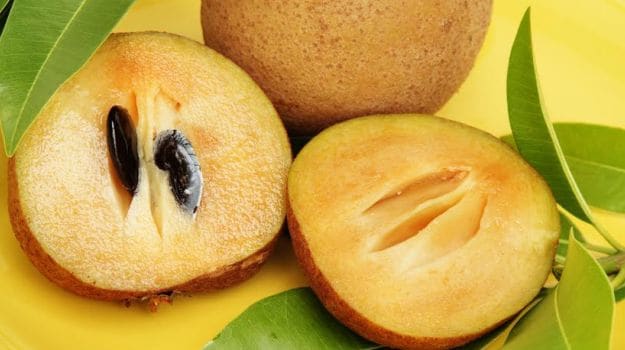Sapota - General information
Sapota or Sapodilla
(Manilkara zapota (L.), native to
Central and 
The fully ripe fruits are highly delicious, with
excellent sweet taste and have a pleasant aroma. Fruits are round, oval
or conical in shape depending on variety and season of harvest. It has
thin rusty brown skin resembling potato in appearance. Fruits consist of
three components viz. peel 15 per cent, edible pulp 81 per cent and
seeds 4 per cent. Its flesh is yellowish brown to honey brown, soft with
sandy or granular texture in which hard black seeds are embedded. Fruit
is very sweet, good source of digestible sugar, which ranges from 12 to
18 per cent and has an appreciable amount of carbohydrates, fiber and
minerals like calcium, phosphorous and iron etc.that are necessary for
good human health. However, sapota is highly perishable and having a
short shelf life.The abundant flow of the sapota fruits in a short span
of the period causes glut in the market resulting in very low prices for
the producer. The fruits of sapota are highly perishable and cannot be
stored for a longer period at room temperature, hence the farmers are
compelled to sell their valuable produce at the throw away process.
White latex from the trunk of
the tree is the source of ‘chicle’, which is the principle ingredient in
chewing gum. Today, sapota is cultivated on a commercial scale for its
fruit in most countries like
The Sapota crop is affected by insect pests like
-
Chiku moth
-
Bud Borer
-
Soft Green Scale
Leaf miner
The main disease reported in sapota is leaf spot caused by Phleopheospora indica.
The area under this crop is rapidly increasing due to its wide adaptability, hardy nature, prolific bearing nature and consistently higher economic returns.
Maharashtra, Karnataka, Gujarat, Andhra Pradesh, Tamil Nadu andWest Bengal
are the main Indian states growing sapota